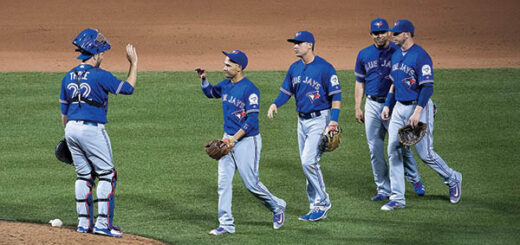Your holiday turn-up guide
Beer Pong, the college phenomenon
Alec Warkentin, Staff Writer, & Paul McAleer, Staff Writer
It’s a late Thursday night, the semester just ended. You’re at home with friends, having some drinks, but you’re bored. Pounding back beers just ain’t the same as it used to be. You go through a mid-college-life crisis. Maybe it’s time to quit this lifestyle, get a real job, maybe start a family. You’re getting too old for this.
Your friend proposes an idea: let’s get the beer pong table out. Suddenly you’re revitalized. That’s just what beer pong does.
“I think I’ve got some red solo cups up in that cupboard, and some ping pong balls somewhere around here.”
Everybody gets energetic, a flurry of movement as the partygoers hustle, excited to get the game setup.
The night is saved… or so it seems, until it finally comes time to play the game.
“Alright, everybody know the rules?” asks one beer-pongee.
A bunch of noncommittal yet positive replies answer back, followed by one or two negatives.
“Okay, well can someone explain them? Just so we’re on the same page?”
And that’s where all hell breaks loose.
The “icing” rule, “elbow” rule, “island” rule, “explosion,” all the things people have picked up in their pong travels have everybody either arguing or attempting to learn these new rules half-drunk. Shouldn’t we just be playing for the love of the game anyway? So to make it easy, here is the one and only guide on how to get the most of your beer pong experience:
The Rules
Talking about the rules of beer pong is like hearing Donald Trump changing his stance every two minutes: it’s annoying, sometimes confusing and always going to be protested by old school players. While new rules seem to be created by the second, there are some pong rules that never change in our opinion.
Quick games are generally played with six cups, but it is possible to play with ten cups and beyond. Unless you dedicate your life to throwing ping pong balls in cups from a short distance, you and your team should not hold up the que by playing with more than six cups.
The game is played with two balls, and first shot is determined by whichever player sinks the ball while looking into their opponent’s eyes.
Don’t lean, shoot from the end of the table.
If you shoot and miss but the ball rolls back to your side, you are allowed to do a trick shot if you obtain possession of the ball.
When one team sinks both of their shots, they get the “balls back” and get to shoot again once their opponents remove the already sunken cups. When one team sinks both of their shots in the same cup, it’s called an “explosion” and every cup touching the double-hit cup is removed from the game.
Once one team effectively sinks their opponents last cup, the losing team gets a chance at “redemption.” If the winning team only sunk their opponents last cup once, the losing team has to make one of their two shots to bring the other team’s cup back.
Here’s a few of our favourite bonus rules:
“Island shots” are when one cup is separated from the rest. Before shooting, a player can declare “island” and if they sink the separated cup, you can choose another cup to go along with it. You can do this once per game.
If a player sinks two cups in a row, he or she can say they are “heating up,” and if they land a third consecutive shot, they can continue shooting until they miss.
It’s important to know that these rules are interpreted differently in every house, so it’s always better to discuss some of the more controversial rules before the game starts.
Note from the editor: While many consider alcohol to be part of the college experience, please drink responsibly. There is no excuse for drinking and driving.




